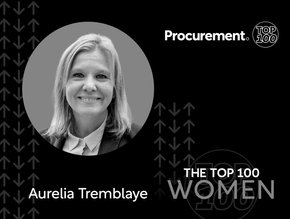Leadership in Procurement, From Cost to Value

Although it seems like it took them a little too long to get there, many organisations have finally started to realise the value of procurement in helping a company reach organisational objectives, unearth competitive advantage and drive ESG initiatives, all of which intertwine.
Procurement leaders are now an essential part of the new troika, partnering with CEOs and CFOs in designing new, more resilient business models. However, in order to drive real impact and realise commitments, procurement leaders will need to transform how they lead.
A company’s procurement resources are often expended, focusing on ensuring that the right materials arrive at the right time, at the right quality and at the best possible price. Transitioning procurement teams from reactionary, transactional procurement to proactively affecting long-term change and delivering impact through strategic procurement requires long-term vision and divergence from traditional approaches to leadership.
I sat down with the always gracious David Loseby, MCIOB Chartered, FAPM, FCMI, FCIPS Chartered, MIoD, FRSA to discuss. The last time I spoke to Loseby, he held the role of Group CPO at Rolls Royce. This time he was just starting to warm up his seat in his new position as Managing Director at Barkers Commercial services.
Barkers is an ethical procurement consultancy that supports clients with their social responsibility aims. Loseby himself holds a deep passion for embedding theoretical-based best practice into real-world scenarios. I couldn’t think of a person more uniquely suited to help us mind the gaps and define how influential leaders can be an impetus for change.
Dynamic leadership: getting with the times
Dynamic times require dynamic leadership. We’ve all heard of the importance of active listening skills. Loseby identifies the gap in skill requirements in the industry and the criticalness that soft skills play in building dynamic and adaptive leadership.
“The agenda from the stakeholders will not remain static. Going forward, we need to make sure that we recognise this and that we constantly sense, check and validate as we go through our journey. Given all the moving parts and business dynamics as you navigate through supply chain disruption or mine for risks, priorities will change. And therefore, we cannot assume that the priorities that we fix at the beginning of a program or a project are going to remain fixed.”
Loseby says that it’s important to leverage soft skills when managing stakeholder expectations and setting courses of action. “People skills, engagement, understanding, and assuming active listening and effective communication are all hugely important. But oddly enough, you look at most of the academic and professional qualifications and routes to becoming a recognised professional, and they’re not there. So, therefore, as leaders, we must identify this gap that exists and then set about addressing it. The harsh reality is we must build this capability in organisations so that practitioners can maximise the delivering of value-adding outcomes.”
“Just as in life, things will be thrown at you. And therefore, we need to be agile and flexible enough to adapt. It’s important to listen to those around you and pay attention to what may, or has, changed and look at how you can mitigate, modify, or adjust your approach and redirect your course. And that course correction is hugely important when we're delivering commercial solutions. There’s no point in carrying on a course of direction that you agreed to twelve months ago. It’s hugely frustrating, and it disengages stakeholders because it shows you've not listened. You may have heard it, but you've not listened.”
The Pursuit of Lowest Cost
“One of the things that academic researchers have amplified recently is the fact that the pursuit of absolute lowest cost has driven us to monopoly supply situations and very complex supply chains. The reality is that in the quest to drive out cost and reach the Nirvana of the lowest cost, we've inadvertently sleepwalked into increased risk and more fragile supply chains.”
However, there’s a high price to pay for identifying potential suppliers and awarding business based on price alone. Loseby remembers an old procurement acronym, AQSCIR, which he believes procurement professionals should still live by.
A- Assurance of supply
Q- Quality
S- Service
C- Cost
I- Innovation
R- Regulatory compliance
“As far as I'm concerned,” he says, “Unless you can sufficiently satisfy all of those six factors, you're not delivering the right solution. You're not delivering value. And it’s imperative that you get that balance right. You can’t have the best price without assurance of supply, for example.
Loseby says procurement leaders show their value through their ability to focus on all six of the attributes. Sharing an example from Rolls Royce, he digs into the varying factors at play when evaluating suppliers and developing solutions. “We started to talk about the value that we delivered in terms of decreasing the number of people-hours that we needed to invest in a particular process or activity, higher levels of quality and assurance, or dual supply. It was a wide variety of considerations that combined allowed us to bring a higher quality solution to the table, sometimes even including looking at entirely different ways of delivering either goods or services.
A weighted discussion involving areas of risk as well as potential opportunities safeguards a company’s continuity of business. Putting talk of cost on hold opens the door for procurement to hold more value-add discussions.
The cost of disruption far outweighs savings while putting your companies service levels and reputation on the line. “Putting the entire business at risk for comparatively small savings is not a good value equation,” he says. “By engaging with stakeholders in terms of the value agenda, they recognise that you’re making it easier for them to do what they do. Removing the friction from contracts or solutions increases their likelihood of adoption. So, for me, that is fundamentally the difference between driving cost vs value.”
From Vendor Management to Collaborative Partnerships
Loseby believes that the old approach of setting requirements and demanding suppliers comply is faulty by design. He suggests companies would extract better outcomes from taking a proactive approach to corporate education and mentoring and working more collaboratively.
When it comes to driving initiatives such as sustainability and diversity, “For many organisations, particularly the SMEs, you are essentially asking them to produce a subject matter expert that has not only the knowledge but the ability to implement new ways of working. It's an unreasonable ask. It just adds another tranche of work somebody has to do amongst their day job. And the reality is that's unreasonable.”
“We have to change the approach to one of enabling, supporting and educating. It’s a very different vocabulary, but I firmly believe that if we redirect all the negative energy that we spend pushing and instead consider helping as a well-spent investment of our time and It will be a more enjoyable journey. And you will build the loyalty and the support of the SME’s and other organisations along the way.”
“Collaboration is one of the greatest ways of delivering competitive advantage. The way in which we conduct business is hugely important. It’s the social contract that we enable between people and businesses that makes things happen. If you want to create suppliers of choice, that's the way of doing it.”






